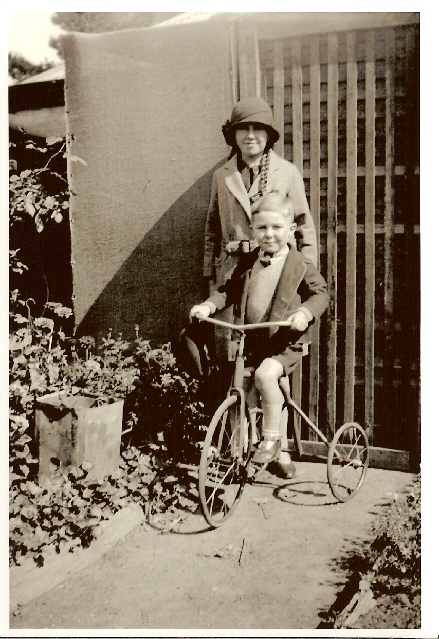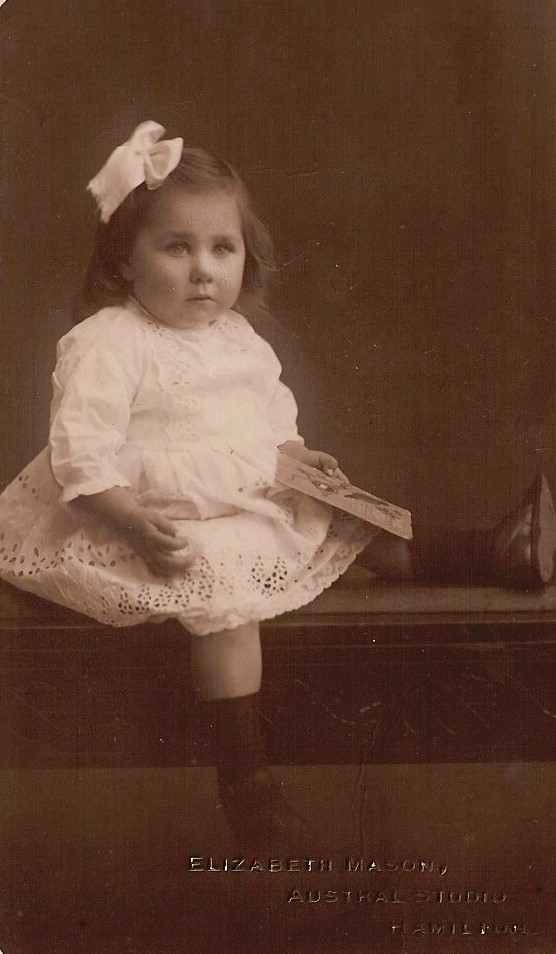It’s been some time since there was an April Passing of the Pioneers. It’s normally a month when I’m busy writing for Hamilton’s WW1 in preparation for Anzac Day. I thought it was about time I added some April obituaries to the Obituary Index. There are eight obituaries for April from Hamilton, Coleraine, Bushfield, and Allansford. They include the wonderful story of Jurgen Wacks, a musician who, while in Denmark, played in the orchestra of a composter known as the “Strauss of the North”.
REMFRY, Thomas Cyprian – Died 4 April 1887 at Hamilton. Thomas Remfry was born around 1816 in Devonshire. As a young man, he joined the Manchester Unity Independent Order of Oddfellows (MUIOOF) in Cardiff, Wales, and remained involved throughout his life. Thomas married Elizabeth Remfry in 1839.¹ In 1854, Thomas and Elizabeth arrived at Portland on the Nestor² and Thomas gained work as a carpenter.
By April 1862, Thomas had a listing in the Hamilton Spectator‘s Hamilton Business Directory and lived in Gray Street. He later went into business with his son opposite the Argyle Arms Hotel in Gray Street.

Thomas was a Freemason in Portland and Hamilton. In 1856, he joined the Portland Lodge of Victoria EC as one of the early members. He was also a founder of the Grange Lodge at Hamilton in 1864, and the first grand noble of Hamilton’s Princess Alice Lodge.

Thomas died in 1887, aged 71. Elizabeth died in 1900. They are buried at the Hamilton General Cemetery (below right). The fallen monument to the left marks the grave of two victims of the diphtheria epidemic in the Hamilton district in 1880. They were Thomas and Elizabeth’s five-year-old granddaughter Emma Elizabeth Remfrey and three-year-old Jessie Hearn of Cavendish, a daughter of Brown Hearne and Elizabeth Huntley. You can read more about the epidemic on the link to Broken Memories Part 3.

Thomas and Elizabeth’s grandson, Hamilton born Herbert Thomas Christoph Layh, a son of Jane Remfry and Charles Layh, was a Lieutenant Colonel during WW1 and awarded a Distinguished Service Order (DSO), a bar to his DSO, a Companion of the Order of St Michael and St George, and mentioned in dispatches three times.
WACKS, Jurgen Andreas – Died 12 April 1899 at Hamilton. Jurgen Wacks was born around 1827 in Schleswig, Germany, then a region of Denmark comprising a mix of Danes and Germans. He joined the army in the 1840s and fought in the German-Danish war between Denmark and Schleswig-Holestein.
Schlwesig returned to German rule and Jurgen went to Copenhagen and played cello in an orchestra under composer Hans Christian Lumbye, known as the ‘Strauss of the North’. During that period, Lumbye was the musical director at Tivoli in the city.
In 1856, Jurgen married Margarethe Marie Nicoline Janssen in Copenhagen3, and a son Adolph was born in the city in 1857.4 They eventually left Copenhagen and made their way to Australia. By around 1862, the family lived at Creswick, north of Ballarat. Jurgen joined the Grand Lodge of Freemasons, something he continued when he settled in Hamilton around 1878.
Jurgen was in the trade of painting and decorating and once in Hamilton opened his doors to customers in Gray Street. His stock expanded over the years to include paints for artists and framing. He also offered piano tuning.

Jurgen continued with his music and was the conductor of the Hamilton Orchestral Society and often played the violin at concerts. An Amateur Orchestra Society followed in 1888 with Jurgen as the conductor. He continued with the society until his death. In 1896, he returned to playing the cello just as he had forty years before in Copenhagen.
A charitable man, Jurgen Wacks, died in April 1899 after some illness.

Margaretha continued operating the business until 1903 when a manager was installed and the business name changed to M. Wacks & Co. Punch photographed the shop in 1905 (below). Margaretha died in 1921.
Press play below, to hear the music of Hans Christian Lumbye, once played by Jurgen Wacks in Denmark.
ROUTLEDGE, Issac – Died 26 April 1902 at Hamilton. Issac Routledge was born in 1823 in Wigton, Cumbria, England. As a young man, he left England for America, but on hearing of Australia’s gold rush, he returned to England to board a ship to Australia. He arrived on the Flora Temple in 1852. After some time at the diggings, Isaac arrived in Hamilton around 1858 and worked as a bootmaker on the southern side of Gray Street. He later opened his own shop.
In 1861, Issac married Jessie Innes. He was active in the community as a borough councillor, a member of the Hamilton Bowling Club, a committee member of the Hamilton Mechanics’ Institute, and a founder and director of the Hamilton Gas Company.
In 1875, Jessie died aged forty-four. The following year, Isaac remarried to Rebecca Bullock.
In 1889, Isaac had a home built for him on Ballarat Road, on the east side of the Grange Burn, between George Street and Rippon Road, with a view of the Grampians. It was designed by a local, Mr Hammond, and named Grange View.
At the time of his death, Issac left a widow, one son, and four daughters.

Issac’s daughter Amelia took over the running of her father’s business and in 1905, the business was taken over by Williams the Shoeman.

WALKER, Matthew – Died 2 April 1907 at Hamilton. Matthew Walker was born in Hamilton, Scotland, around 1828. In the early 1850s, a group of residents near Matthew’s home purchased a ship, intending to sail to Australia. All adults wishing to sail bought a share in the ship, the Sophia Burbidge.
On arrival, Matthew spent time at the Bendigo and Ballarat diggings before working on the Yan Yean waterworks. He then headed west and gained work on one of the large stations owned by the Chirnside brothers.
In 1865, Matthew married Ann Martinen, Matthew found his way to Hamilton and took up work at Grange Mill and their first child was born in Hamilton in1867
Next, he secured a job as sexton of the Hamilton Cemetery, a position he held for the rest of his life.
In 1878, the passengers of the Sophia Burbidge came together for a 25th anniversary. In 1903, they met again for the 50th anniversary with their numbers depleted. Matthew made the trip to Melbourne.
In his later years, Matthew suffered ill health but remained active. He took a blow in 1907 when Ann died on 18 March. His health sank, and he died on 1 April. Matthew and Ann were buried together at the Hamilton (Old) Cemetery.
JAMES, Mark – Died 28 April 1909 at Coleraine. Mark James was born in Staffordshire, England, around 1843. He arrived in Victoria aboard the Red Jacket in 1860. In 1866, he married Emma Taylor and their first child was born the following year at Mortlake. By 1879, Mark had moved his family to Coleraine.
Mark went into business as a timber merchant. A founder of the Coleraine Rifle Club, he was also involved with the local branch of the Mounted Rifles and the Sons of Temperance Society. A Methodist, he was a local preacher and a member of the Coleraine Methodist Church Sunday School committee, the Coleraine Mechanics’ Institute, the cemetery trust, and the debating club.
When he died suddenly from heart failure in 1909, Mark left a widow, four sons, and three daughters. He was buried at the Coleraine Cemetery.
CARUTH, Alexander – Died 10 April 1915 at Bushfield. Alexander Caruth was born in County Antrim, Ireland around 1822. He arrived in Victoria around 1853 aboard the Bloomer. He travelled to Kirkstall, near Warrnambool, but gold lured him back to the east. During the events at the Eureka Stockade in December 1854, Alexander was just to the north at Creswick.
Alexander married Elizabeth Clarke in 18585. The couple went to Bushfield around 1861 and settled at Spring Flat for the rest of their lives. They raised a large family, and when Elizabeth died in December 1914, she left two sons and five daughters. Alexander’s health started to fail after Elizabeth’s death and he died five months later. He was buried at the Warrnambool Cemetery.
ABRAHAM, Elizabeth – Died 5 April 1916 at Allansford. Elizabeth Abraham was born at Tooram, Allansford around 1848. She attended Allansford School before her family moved to Mepunga, south-east of Allansford. In 1865, Elizabeth married James Anderson.6
The couple settled in Allansford, where James was the local postmaster. Elizabeth had twelve children, three of whom died as infants. Another two children died while in their late teens. Elizabeth was actively involved with the local Presbyterian Church and was a charitable woman who happily offered advice when asked of her.
At the time of Elizabeth’s death in 1916, she left three daughters and four sons. The flag at the Allansford State School flew at half-mast. Her funeral saw 120 buggies join the cortege to the Warrnambool Cemetery.
References
1. Free BDMs, England and Wales Civil Registration Indexes, Cardiff, Vol 26 p. 469, 1839, Thomas Remfry
2. Public Record Office of Victoria, Register of Assisted Immigrants from the United Kingdom [refer to microform copy, VPRS 3502] (VPRS14), P0000, Book No.10 , Nester, 1854, Thomas Renfrew
3. Denmark Church Records, Rigsarkivet; Danmark; Kontraministerialbog; Reference: 8025888571, Jürgen Andreas Wachs, 1856
4. Rigsarkivet; Danmark; Kontraministerialbog; Reference: 8025888551, Andreas Jürgen Wachs, 185
5. Department of Justice, Victoria Victorian Marriage Index, Alexander Caruth 1853, Registration No. 3438/1858
6. Department of Justice, Victoria Victorian Marriage Index, Elizabeth Abraham, 1865, Registration No. 4260/1865
























































































You must be logged in to post a comment.